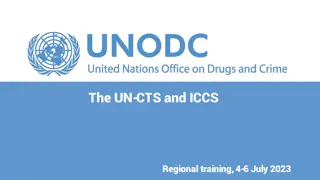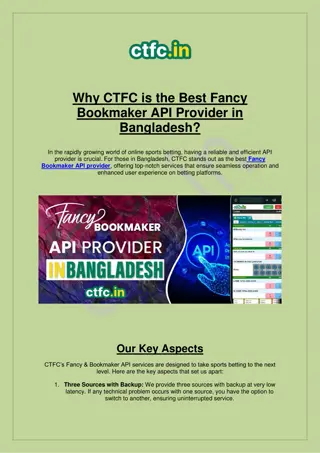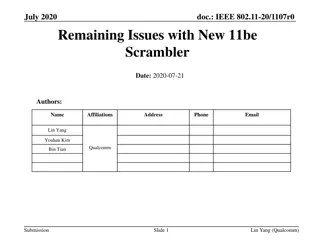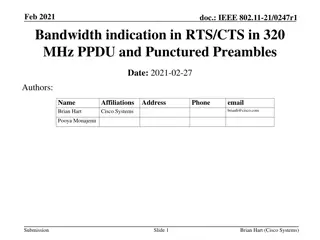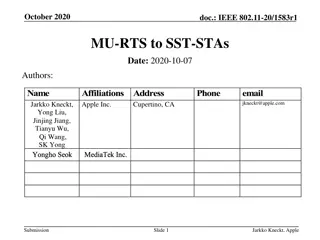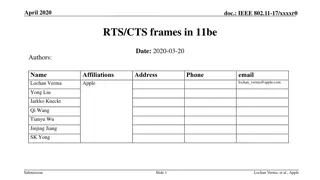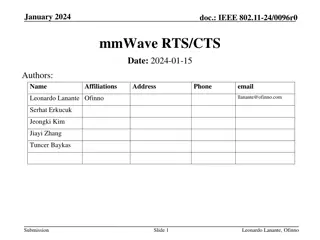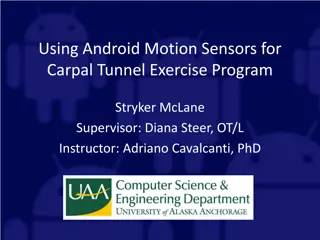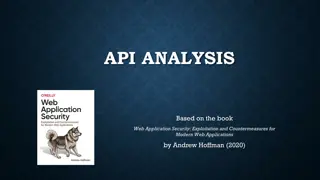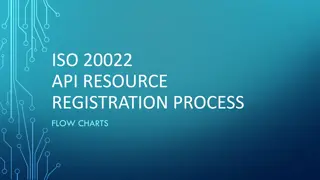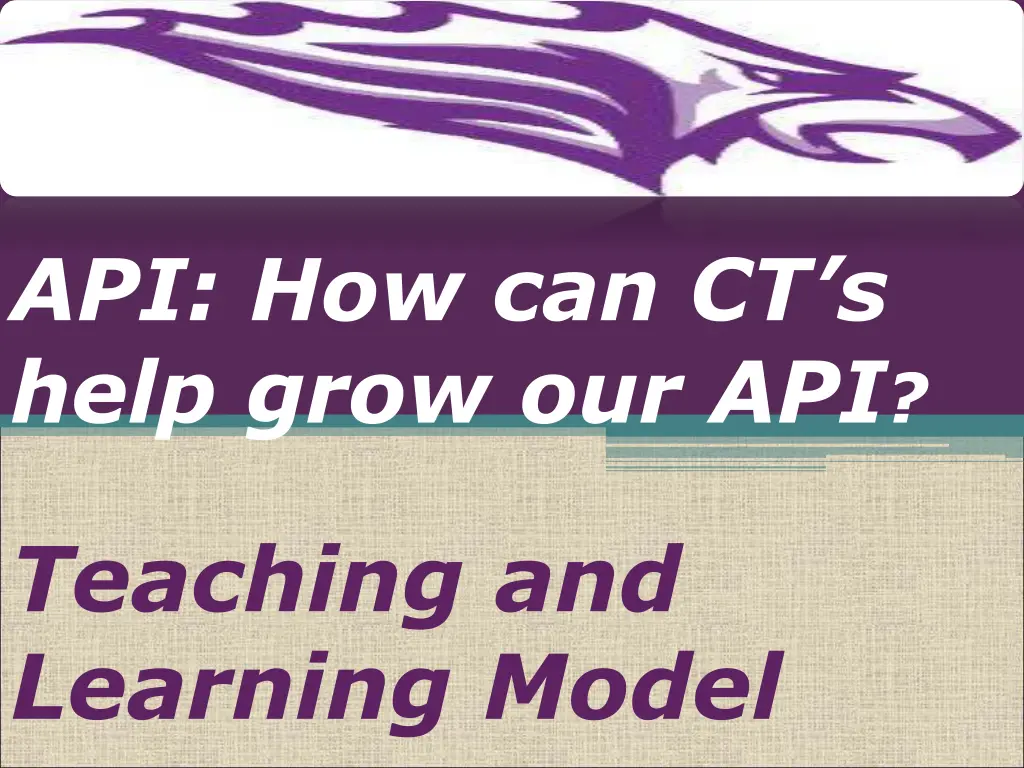
Empowering Your API Growth Through Teaching and Learning Models
Discover how Curricular Teams (CTs) can drive API growth by utilizing the Teaching and Learning Model, focusing on identifying struggling students, using formative assessment data, setting strategic growth goals, and more. Explore the impact of CTs on student reach, achievement, and engagement, and learn about modifying instructional plans to cater to student needs effectively.
Download Presentation

Please find below an Image/Link to download the presentation.
The content on the website is provided AS IS for your information and personal use only. It may not be sold, licensed, or shared on other websites without obtaining consent from the author. If you encounter any issues during the download, it is possible that the publisher has removed the file from their server.
You are allowed to download the files provided on this website for personal or commercial use, subject to the condition that they are used lawfully. All files are the property of their respective owners.
The content on the website is provided AS IS for your information and personal use only. It may not be sold, licensed, or shared on other websites without obtaining consent from the author.
E N D
Presentation Transcript
API: How can CTs help grow our API? Teaching and Learning Model
Using the Teaching and Learning Model Looking Forward this year Identify Struggling Students Use Formative Assessment Data Ensure that PF AD stay PR AD Target FBB and BB for strategic growth Goal set with bubble BASIC
What do Curricular Teams have to do with all this Departments are at different places on the spectrum of CT. But does it really work? Does it really help us reach students? Does it really increase achievement?
CSTP: 4.5 Modifying instructional plans to adjust for student needs
Re-Teach Areas of Weakness Formative Assessment What was learned? Why or why not? Lesson Closure Re-state Learning Objective Connect Learning Objective to Past and Future Learning Celebrate Learning Analyze Content Standards Create Measurable Learning Objectives Post and Communicate Measurable Learning Objectives to Students Initial Instruction (With Emphasis On) Student Engagement Student Centered Formative Assessment What was learned? Why or why not?
Team Based Adherence to Common Assessment and Data Analysis Schedule Team Members Analyze Common Assessment Data (Early Out Wednesdays) Identify Areas of Strength and Weakness Re-Teach Areas of Weakness Re-Assess Areas of Weakness Celebrate Learning Identify and Assemble Curricular Team Analyze Student CST Data Analyze Content Standards Review and Adjust Pacing Guide Develop/Adjust Common Assessments Create Common Assessment and Data Analysis Schedule
SJMS Critical Questions What do we want students to learn? How are we going to teach them? How will we know if they have learned it? What are we going to do if they don t?
Understanding what sustained growth looks like. Sporadic Gains/Drops Sustained Growth
7th grade CT What we accomplished: Began work on common pacing guide Evaluated what would be the best common assessment to use per unit. Attended Valley Regional Writing Day, to create common writing instruction. What we began: A shift from quarterly assessments to common unit assessments. Where we are going: Common writing strategies Common writing prompts & rubrics Common unit assessments Begin to use assessment data to adapt and drive future instruction. 8th grade CT What we accomplished: Educating all students with excellent academic instruction and high quality instruction What we began: Continuing to create more consistency and continuing to build team capacity Where we are going: Focus on our curriculum, pacing guides, assessments, Focus on classroom instruction Use data to focus on students who are not making gains to close the achievement gap. Create consistency and collaboration throughout our department.
Department Progress: 7th ELA 7th ELA CT 80% 70% 60% 2007 2008 50% 2009 2010 2011 40% 30% 20% WrdAnlVoc ReadComp LitRsp&Anl WritCnvtn WritStrat WritAppl
Department Progress: 8th ELA 8th ELA CT 80% 70% 60% 2007 2008 50% 2009 2010 2011 40% 30% 20% WrdAnlVoc ReadComp LitRsp&Anl WritCnvtn WritStrat
7th grade CT 8th grade CT What we accomplished: Over two dozen common assessments for Algebra classes. Revised pacing guide for Algebra classes. Common assessments for Algebra Readiness classes. Finalized pacing guide for Algebra Readiness classes. What we began: A collaborative effort to correctly place students in the correct 8th grade math class using recommendations and data. Put many of the assessments on Edusoft and compared data. Where we are going: Determine which students are most likely to succeed in Algebra with Clinic/Support classes based off of data and recommendations from three sections this year. What we accomplished: Finalized pacing guide for Pre- Algebra classes. Common assessments for Pre- Algebra classes. What we began: Developed a method for placing incoming seventh graders into math classes based on the district s placement matrix. Where we are going: Create more homogeneous class populations to make sure students are receiving the instruction that fits them the best.
Department Progress: 7th Math 7th Math CT 80% 70% 60% 2007 2008 50% 2009 2010 2011 40% 30% 20% RatNums ExptPwrRoots QuantRelEvlEx MultPrbGrFnct MeasGeom StatDataProb
Department Progress: 8th Math 8th Math CT 80% 70% 60% 2007 2008 50% 2009 2010 2011 40% 30% 20% RatNums ExptPwrRoots QuantRelEvlEx MultPrbGrFnct MeasGeom StatDataProb
7th grade CT 8th grade CT Have created: Common pacing guide for the year Common assessments for all of the chapters/units Common warm-ups using the questions from the assessments (power point) common Science Notebook set up common lessons/labs Have created: Common pacing guide for the year common assessments for all of the chapters/units common Science Notebook set up common lessons/labs Working on: improving/refining assessment and warm-ups adding more and/or new hands on life science activities and labs Working on: improving/refining assessment
Department Progress: Science Science CT 80% 70% 60% 2007 2008 50% 2009 2010 2011 40% 30% 20% Motion Force Den&Buoy Matter&PeriodTbl Earth/SolarSystm React/ChemLiving InvestExper
8th grade CT 7th grade CT What we accomplished: We refined our existing common guiding questions for each unit as well as our common unit assessments and pacing guide (developed based on the CST Blueprint, Released CST Test Questions, and California Standards. Focused not only to the content but also on introducing academic language and analysis skills. Worked together to develop common day-by-day lesson binders for the first half of the year that all can access for strategies to teach standards. What we began: common day-by-day lesson binders for the second half of the year Finishing touches on our testing and reflection calendar Everybody will have the test data ready for discussion and action at department meetings. Where we are going: Complete Lesson binders for the year. We are also hammering out our process for re- teaching and re-evaluating students based on the data our initial assessments provide. Continue to collaboratively reflect and improve upon lessons and assessments. Looking more closely on what the data suggests about the achievement gap Exploring methods of engaging students who are detached from the learning process. What we accomplished: Developed common assessments for the 2010-11 school year based on the same criteria described for Grade 8. What we began: Over the summer, some of us met to create a common lesson binder, revise our pacing guides, set up testing windows and dates for data evaluation at department meetings. Where we are going: We will continue to refine our lesson binders and common assessments and analyzing the assessment data, and implementing our process for re-teaching and re-evaluation, as well as continually revising practices based on our common evaluation of what is and isn t working. (see 8th grade for more detail)
Department Progress: History Social Studies CT 80% 70% 60% 2007 2008 50% 2009 2010 2011 40% 30% 20% WH/GeogAC LateAntMdlAg RennRefrm USConstER CivWarAftrmth
Raising API: Follow the Teaching and Learning Model Weekly formative assessments Common pacing and instruction in my CT Using Common assessment data to re- teach Set goals with my students Sharing data with student as to how they are progressing towards standards Mapping my pacing and instruction to the CDE Blueprints

